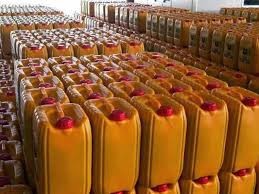Indonesia Eyes Twin Gains from Slashing Crude Exports

Indonesia's plan to cut its crude oil exports by almost half from next year and instead use those volumes at home is seen by the market as a logical move that will help Jakarta achieve its twin objectives of reducing dependence on imports and saving valuable foreign exchange.
As Southeast Asia's biggest oil consumer steps up efforts to boost energy security, the move is seen by traders as a logical step as spot differentials for most Indonesian export grades have been falling since the start of the year amid dismal demand from its main buyers such as Japan.
I Gusti Wiratmaja Puja, director general at the Energy and Mines Ministry, said Friday that Jakarta was planning to cut exports by about 200,385 b/d starting next year, from about 400,000 b/d of crude and condensates Indonesia currently exports, in a move that will help the government save about $3.8 billion/year.
"The new policy will cut Pertamina's dollar needs that is usually used to buy crude," Puja said, adding that Pertamina would use the crudes, which would not be exported, at its own refineries.
Around 16 producers operating in Indonesia have agreed to the plan for reduced exports, he added.
According to latest data from the US Energy Information Administration, Japan takes roughly about 28% of Indonesia's overall crude exports. Japan is the major outlet for Indonesia's main export direct-burning grades including Minas, Cinta and Widuri.
Regional sweet crude traders said the possible restart of more nuclear power reactors in Japan could add to the downside pressure on Southeast Asian direct-burning grades.
"Japan's nuclear power is by far the biggest threat for direct-burning oil. Demand can only get worse," said a regional sweet crudes trader.
Indonesian direct-burning crudes trade in relation to its own ICP, or the Indonesian crude price, but due to their dwindling liquidity, low production volume and limited outlets -- they are highly dependent on export to Japan -- these cargoes are now commonly traded against prevailing Brent values.
The differential for Indonesia's Cinta crude to front-month ICE Brent futures averaged at a discount of $7.56/b in August, compared with a discount of $6.99/b in July and a discount of $5.62/b in June, data showed.
The differential for Minas crude to front-month ICE Brent futures averaged at a discount of $5.62/b last month, compared with discounts of $5.14/b in July and $3.77/b in June.
Indonesia also exports several naphtha-rich grades like Geragai and Senipah condensates, although traded levels for the ultra-light crudes so far this year have been quite bearish, according to regional traders.
REDUCED SPOT AVAILABILITY
The intention by Jakarta to reduce crude exports comes just after it announced plans to rejoin OPEC after a gap of seven years, as it tries to cement its relationship with leading producers in a bid to ensure that it gets crude on better terms to meet growing domestic demand.
OPEC announced last week that Indonesia would be "reactivating" its membership at the exporter group's next meeting in December.
Regional traders said the introduction of new Indonesian export grades such as Banyu Urip crude and Senoro condensate this year have added to the downside pressure amid an already well-supplied regional market.
This meant that if Jakarta did not reduce exports, Pertamina would have to continue risk selling its cargoes at deep discounts to the country's monthly official selling prices or benchmark Brent prices, trade sources said.
"Reducing exports will certainly help protect their values. Many of the Indonesian export grades are already trading at steep discounts," said a Singapore-based trader.
Indonesia's crude oil output peaked at 1.6 million b/d in 1995 and has since fallen due to natural decline at aging fields.
Last year Indonesian production averaged 794,000 b/d, missing a target of 818,000 b/d due to a combination of technical and other problems. Output is currently hovering at around 800,000 b/d.
Pertamina estimates that crude demand is increasing by 2%/year while upstream output is dwindling.
The deficit will rise from 724,000 b/d in 2015 to 1.1 million b/d in 2020 and reach 1.447 million b/d in 2025, the company said.
HEADLINES
- Do shipping markets want Biden or Trump for the win?
- All 18 crew safe after fire on Japanese-owned tanker off Singapore
- Singapore launching $44m co-investment initiative for maritime tech start-ups
- Cosco debuts Global Shipping Industry Chain Cooperation Initiative
- US warns of more shipping sanctions
- China continues seaport consolidation as Dalian offer goes unconditional